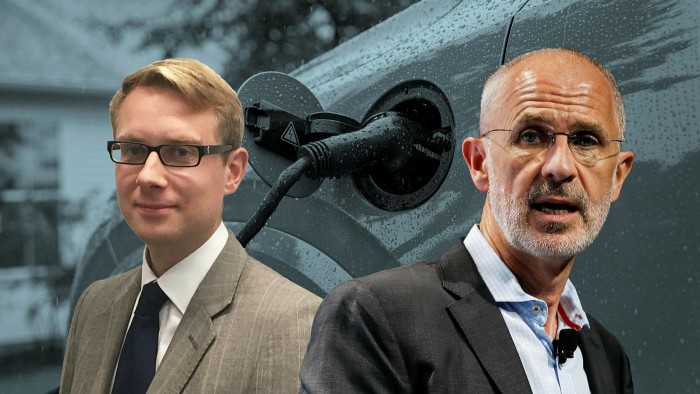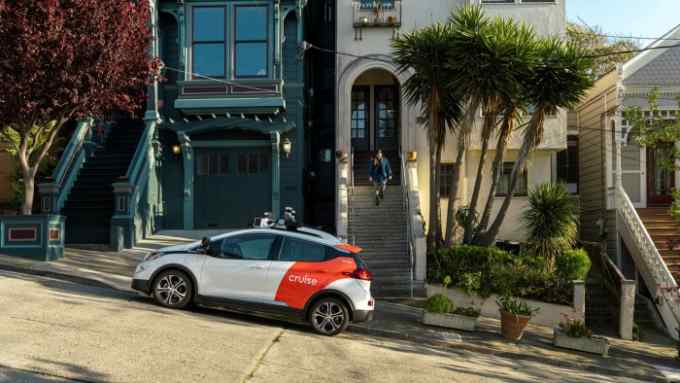Transcript: What does the future of the car look like?

Simply sign up to the Automobiles myFT Digest -- delivered directly to your inbox.
Jim Rowan, chief executive of Volvo Cars, spoke to Peter Campbell, FT global motor industry correspondent, at FT Live’s Future of the Car conference in London last month. This is an edited transcript of his remarks on the transformation of personal mobility.
The automotive industry is going through a massive transformation and there are two parts to that. One is the technological side: the move to electrification and electrical propulsion systems. But that’s really the tip of the iceberg — and, in some ways, it’s the easier part.
Adjacent to that, at the same time, you have this massive commercial transformation: direct to customer engagement, how you find the next demographic, how you convert them into a customer and, post-conversion, how you then continue to interact with them.
So you’ve at least two massive transformations being played against the backdrop of the move to carbon-free [mobility]. And that sustainability, circular economy narrative is something I think is really exciting on one side and very important on the other.
The new challenges that will face the automotive industry are what I call ‘next generation mobility’. [They] will come from software, electronics and that direct connection to the customer.
As a proxy, take the smartphone industry — an area that I spent significant time in [at BlackBerry]. When the smartphone industry went through the transformation from what was called a ‘feature phone’ to a ‘smartphone’, many people thought we’ll just keep doing things the same way.
[But] that displaced a lot of the leaders in feature phones who never quite made the transition to the smartphone. Because when you look at a feature phone, ostensibly, it made a call and could share some data. The smartphone enriched that product to a level that no one had envisaged. The [number] of things that you could do with the smartphone that you couldn’t do a feature phone — and how it became a part of your everyday life — was transformational. And the same thing is going to happen in the auto industry, or the next generation mobility industry, as I prefer to call it.
What we’ll be able to do with next-generation mobility is going to be tremendously different from what we currently do with our cars. That is the big change but, when you’re in the middle of a transformation, it is sometimes more difficult to see.
I think we’ll see great technology being used across the whole [industry], in every car going forward. And we’re actually seeing that right now: we’re starting to see some of that great technology being poured in every sector of the car market. And that’s only going to accelerate.
Also remember that the next generation we need to bring into the car market is Generation Z. Gen Z, at this point, are not quite in the “buy” box. But they’re getting very close and they absolutely influence [those in] the “buy” box.
And Gen Z are digital natives. They were born in a digital world, and therefore, they expect that digitisation. They expect that connectivity. They expect the kind of services that are going to be available, seamlessly between the car and the home and the phone.
To them, this is not a wow factor. If you’re of a certain age and you leave your home listening to something on Spotify and you go into your car and it starts to play, you think, ‘Wow! That’s cool!’ Digital natives don’t think like that. They expect that. And that’s what we really need to start preparing for: what are the expectations of the next generation customers?
Whether they buy [a car] is a great question. So we need to give them the choices. So whether they buy a car, whether they have fractional ownership, whether they have subscription models, whether they rent a car for the day, for the hour, they’re still going to expect that same level of technology to be prevalent within the car that they choose.
The software across the entire product is going to change through time, of course. We’ll reduce the amount of different electronic control units ECUs throughout the car. And then, eventually, we’ll get more to a “pure core compute” architecture.
And the big job there for us is to figure out exactly what [components] we want to own and what [components] will be more economical and faster to partner up [on]. For example, we need to understand silicon [chips] much better. It is something the auto industry had outsourced.
To some extent, they were buying [chip-based components] in from some big sub assembly manufacturers. And they allowed them to make the choice on silicon. And then they bought in the sub assembly and pretty much plugged into the car. We need to really understand silicon to a much, much deeper level than we’ve ever had to do in the past, and then make those choices around those chip manufacturers.
So let’s call that the silicon layer. Then, what do we need in terms of the software stack that sits on top of that? Something that is near and dear to Volvo’s heart, obviously, would be the advanced safety and active safety mechanisms, and understanding the silicon and the firmware that goes with that, and connects that to the radar, the LIDAR [Light Detection and Ranging distance scanners], the camera array — and how we continually improve and update that.
That’s very new, I think, for many companies within the industry. And it’s something we have spent a lot of time on and will continue to do so.
The above transcript has been edited for brevity and clarity.

Comments